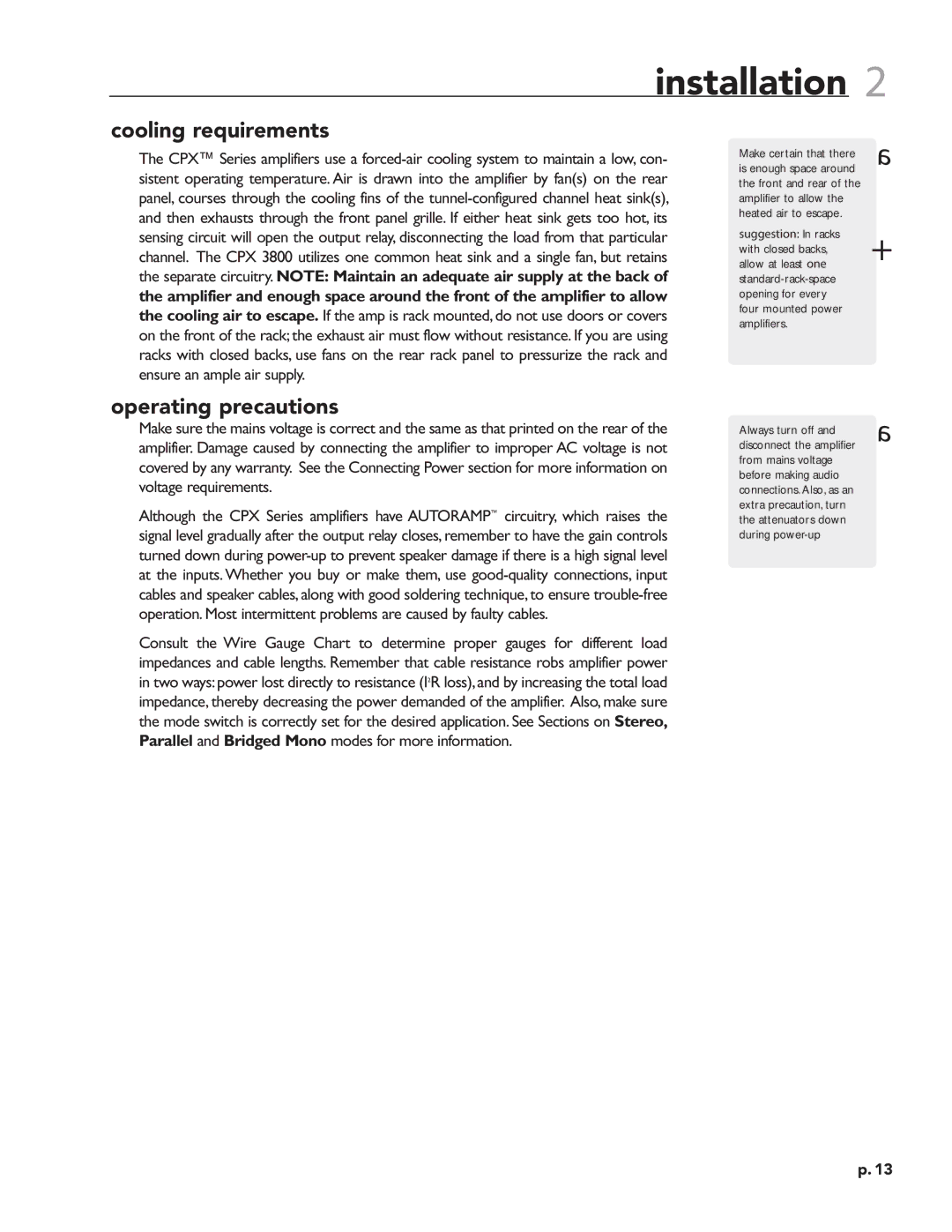
installation 2
cooling requirements
The CPX™ Series amplifiers use a
Make certain that there is enough space around the front and rear of the amplifier to allow the heated air to escape.
suggestion: In racks with closed backs, allow at least one
a +
operating precautions
Make sure the mains voltage is correct and the same as that printed on the rear of the amplifier. Damage caused by connecting the amplifier to improper AC voltage is not covered by any warranty. See the Connecting Power section for more information on voltage requirements.
Although the CPX Series amplifiers have AUTORAMP™ circuitry, which raises the signal level gradually after the output relay closes, remember to have the gain controls turned down during
Consult the Wire Gauge Chart to determine proper gauges for different load impedances and cable lengths. Remember that cable resistance robs amplifier power in two ways: power lost directly to resistance (I2R loss), and by increasing the total load impedance, thereby decreasing the power demanded of the amplifier. Also, make sure the mode switch is correctly set for the desired application. See Sections on Stereo, Parallel and Bridged Mono modes for more information.
Always turn off and disconnect the amplifier from mains voltage before making audio connections. Also, as an extra precaution, turn the attenuators down during
a
p. 13
